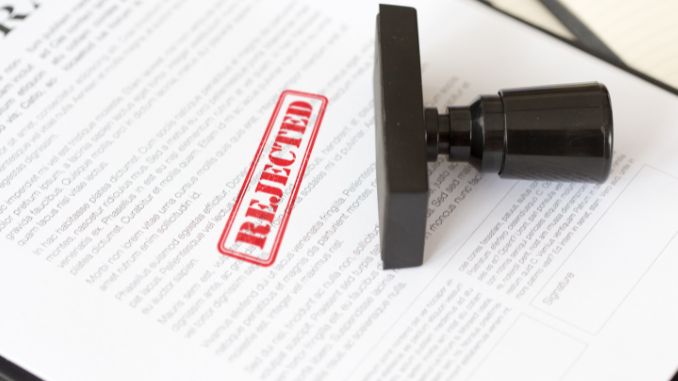
What are desk rejections?
Desk rejections, while often disheartening, are a common experience for many academic authors. Such rejections occur when a journal editor determines that a submitted manuscript does not align with the publication’s focus or standards, frequently without the manuscript undergoing peer review. This type of rejection is not only commonplace but also tends to come with limited feedback, usually indicating a mismatch with the journal’s criteria.
Journal editors are continually inundated with new submissions, compelling them to make swift decisions about which papers are worthy of the more rigorous peer review process. In the dynamic realm of scholarly publishing, it’s noteworthy that even highly respected journals are known to reject upwards of 90% of the manuscripts they receive across a diverse range of research fields. These stark statistics can be intimidating, prompting questions about how to skillfully navigate around desk rejections. More critically, they highlight the need for persistence and resilience in the academic publishing journey.
The good news is that there are proactive measures you can adopt to significantly reduce the likelihood of encountering a desk rejection and to bolster the chances of seeing your work in print. This blog post aims to demystify the common missteps that frequently lead to desk rejections. We’ll provide a blend of expert insights and practical guidance, equipping authors with the knowledge and strategies necessary to avoid these pitfalls. Our goal is to empower you with the tools and confidence to not only sidestep desk rejections but also to enhance your prospects of achieving publishing success.
Common Reasons for Desk Rejection and Solutions
1. Poor Manuscript Preparation:
- Co-Author Review: Have all co-authors meticulously review the manuscript, especially the technical sections.
- External Proofreading: Engage colleagues familiar with the topic for additional proofreading to ensure content accuracy.
- Adherence to Guidelines: Strictly follow the journal’s author guidelines for formatting, citation styles, structure, ethical standards, and overall completeness.
- Title and Abstract: Ensure your abstract and paper title are concise, clearly highlighting the relevance of your results to the journal’s readership.
- Consistency Checks: Rigorously check for inconsistencies, such as discrepancies in tables, figures, and text, and reference numbering errors.
- Word Count and Formatting: Stick to the recommended word count and refrain from manipulating formatting elements like line spacing and fonts.
2. Mismatch with Journal’s Aims and Scope:
- Journal Selection: Select a journal that aligns closely with your manuscript in terms of scope, target audience, and style. Be prepared to revise your work to better fit the chosen journal.
3. Ethical Concerns:
- Plagiarism: Avoid plagiarism through proper quotation and paraphrasing. Ensure accurate citations, including those of your own previously published work.
- Single Submission Policy: Submit your manuscript to one journal at a time and wait for the decision before approaching another.
4. Lack of Significance, Novelty, and Impact:
- Emphasizing Novelty: Clearly communicate the uniqueness and importance of your research. Develop experiments and hypotheses that address significant questions in your field.
5. Flaws in Research Methodology or Study Design:
- Methodology Review: Conduct a thorough literature review to choose the most appropriate methodology for your study.
- Problem Statement: Develop a clear, well-structured problem statement that highlights the study’s importance.
- Professional Collaboration: Work with statisticians, ethicists, research librarians, and graphic artists to enhance the quality of your manuscript.
- Mentor Feedback: Seek evaluations from experienced mentors in your field. Their insights can substantially improve the quality and clarity of your manuscript.
- Acknowledging Limitations: Be upfront about the limitations of your study. This demonstrates a thorough understanding of your research context and methodology.
- Comprehensive Literature Review: Provide a detailed review of existing literature to contextualize your research and demonstrate its relevance and necessity.
- Appropriate Statistical Analysis: Employ correct statistical methods and ensure they are properly implemented and interpreted.
6. Language and Writing Issues:
- Grammar and Language Proficiency: Thoroughly proofread your manuscript for language and grammar issues. Clear and correct use of language is crucial for conveying your research effectively.
- Technical Terms and Jargon: Use technical terms accurately and minimize jargon to make your paper accessible to a broader audience.
- Active vs. Passive Voice: Prefer active voice for clearer, more direct writing. Use passive voice only if it is the norm in your field or specifically requested by the journal.
- Academic Editing Services: Consider employing academic editing services, especially if English is not your first language, to polish your manuscript.
7. Inadequate Response to Reviewer Comments:
- Addressing Feedback: If your manuscript reaches the review stage but is then rejected, carefully address all reviewer comments in subsequent submissions.
- Revisions and Justifications: Make necessary revisions based on feedback and provide justifications for any aspects you choose not to change.
- Re-submission Strategy: When re-submitting to the same journal, clearly outline how you have addressed the reviewers’ concerns.
By conscientiously addressing these common areas of concern, authors can markedly improve the quality of their submissions and boost their chances of successful publication. It’s important to remember that desk rejections are not just setbacks, but valuable opportunities for learning and growth. They provide a chance to refine your research and enhance your presentation skills, leading to more robust and influential publications in the long run. For further guidance and to ensure your submissions are aligned with our standards, we encourage you to review our Submission Guidelines and utilize our Manuscript Preparation Template. These resources are designed to assist you in crafting submissions that meet our criteria, helping to streamline the publication process and increase your work’s visibility and impact within the academic community.
Editor: Ermina Vukalic
Leave a Reply